La Eme: Mexican Mafia Control Over California Gangs
May 1, 2025
The Mexican Mafia’s Influence in the California Prison System

The prison gang La Eme are present in both federal and California prisons. The difference between jail and prison is clear but often misunderstood. Local county sheriffs manage jails, while the state operates prisons. In California, the California Department of Corrections and Rehabilitation (CDCR) runs the state prison system. I have spoken with numerous parole agents who openly joke, “Forget about the ‘R’ – there is no rehabilitation in the California Prison system.” More than half of released prisoners reoffend within three years, pushing the recidivism rate above 50%. If you think about it joining a prison gang is announcing to prison officials that you are going to continue criminal behavior which is the opposite of rehabilitation.
The Rise of Prison Gangs
The CDCR has evolved in its terminology. Authorities once called them ‘prison gangs,’ but now label them ‘Security Threat Groups’ to prioritize threat levels. The CDCR has certified seven Security Threat Groups: the Aryan Brotherhood, Black Guerilla Family, Nazi Low-riders, Nuestra Familia, Northern Structure, Texas Syndicate, and La Eme. A prison gang originates within the Department of Corrections and engages in homicides, assaults, weapons and drug possession, extortion, intimidation, and conspiracy.
La Eme, also known as the Mexican Mafia, has established a powerful alliance with the white supremacist prison gang, the Aryan Brotherhood. This alliance demonstrates the pragmatic nature of prison politics – racial ideology becomes secondary to mutual benefit and protection. An La Eme member or an Aryan Brotherhood member will offer to beat up or kill prisoners at the request of their allies. This creates a deadly chess game where prisoners must constantly assess their surroundings.
Validation Process and Housing
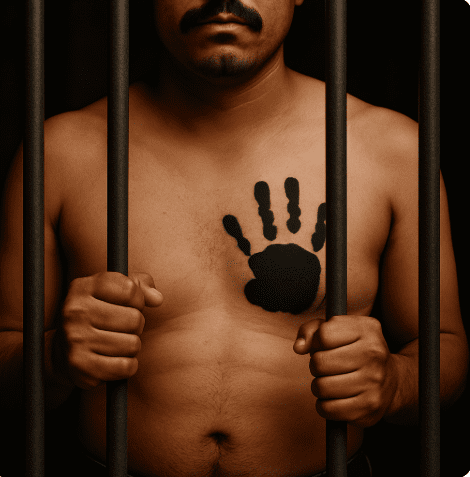
The CDCR employs a thorough validation system for confirming gang membership using a point system. At least one point must be a direct link showing association with a current or former validated member. CDCR requires an inmate to earn ten points to be validated. The validation sources include legal documents (7 points), tattoos (6 points), offenses (6 points), self-admission (5 points), communications (4 points), and several others.
Once validated, a gang member faces housing restrictions. California sends its most violent members to Pelican Bay State Prison, the state’s ‘Super Max,’ which has 22 pods housing 1,056 inmates. In 2023, the CDCR closed the Secure Housing Unit.
Sureños and La Eme
When a Southern California gang member enters prison, they identify as a “Sureño” and instantly belong to a protected group. In the 1960s, the term “Sureño” emerged in the California prison system. As a Sureño, one works on behalf of La Eme. La Eme demands Sureños follow strict rules: participate in prison riots, never discuss La Eme business, and help fellow Sureños in fights regardless of prior acquaintance.
Sureños identify themselves with the color blue, variations of the number “13,” tattoos with the letters “Sureño,” “Sur,” “South-Side,” or “Sur Califas.” The number 13 is significant because “M” is the thirteenth letter of the alphabet – a homage to La Eme. See the blog Why Do People Join Gangs?—getting jumped into a gang means a 13-second beating, a homage to La Eme.
The federal prison system houses an estimated 57 validated La Eme members and 3,538 Surenos. In the California prison system, there are approximately 182 La Eme members and 2,189 EME associates, and thousands of Surenos.
The California prison yard exemplifies tribalism at its most primal. Men group themselves by race and geography. Southern California gang members (previously south of Bakersfield, now San Jose) are “Sureños,” while northern California gang members are “Norteños.” According to Ventura County gang members I’ve interviewed, Sureños achieved dominance within California prisons – likely through numerical superiority. Some Sureño gang members report never encountering a single Norteño during their incarceration.
Hierarchy and Membership
La Eme maintains a strict hierarchy. At the top are La Eme members, known as carnals/brothers, tios/uncles, or Big Homie. Below them are La Eme associates, called Camaradas, sobrinos/nephews, or camarones/shrimps.
La Eme enforces rigid membership requirements: only Southern California Hispanic males can join, and candidates must be nominated by a member and approved by three others.
La Eme enforces strict rules: don’t be a rat, don’t be a coward, and don’t be a homosexual. They also have more flexible rules: never raise your hand against a La Eme member without sanction, don’t have sex with a La Eme member’s wife or girlfriend, don’t steal from brothers, don’t interfere with a brother’s business, and don’t politic (talk behind members’ backs).
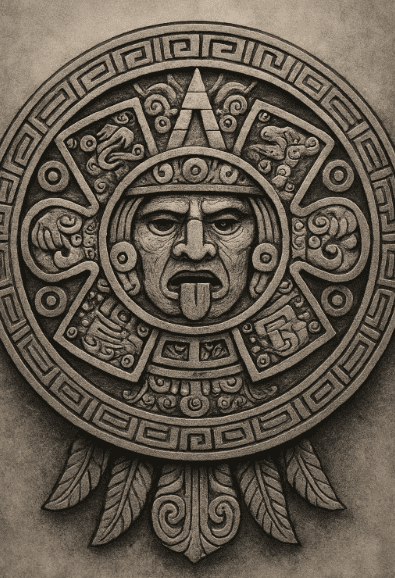
Symbols and Identification
Symbols are crucial to La Eme, which favors Aztec imagery. Looking at the past is a common tactic people use to aggrandize themselves, and fantasize they aren’t a poor person in prison. By identifying with the past greatness of the Aztecs the gang members don’t have to focus on their own imprisonment, disappointment, and despair.
The eternal war shield tattoo represents honor and respect earned by a warrior; when worn by a Sureño, it signifies warrior status for La Eme. Other symbols include Aztec numbers (three dots and two lines equal 13) and the “Mano Negra” or black hand tattoo, exclusively worn by La Eme members. Historical accounts depict Aztecs as cannibals who participated in human sacrifice. In 1521, Spanish conquistadors and members of the surrounding tribes defeated and subsequently slaughtered the Aztecs. It is more likely that La Eme members who celebrate Aztecs are the descendants of the native tribes that defeated and committed genocide on the Aztec people.
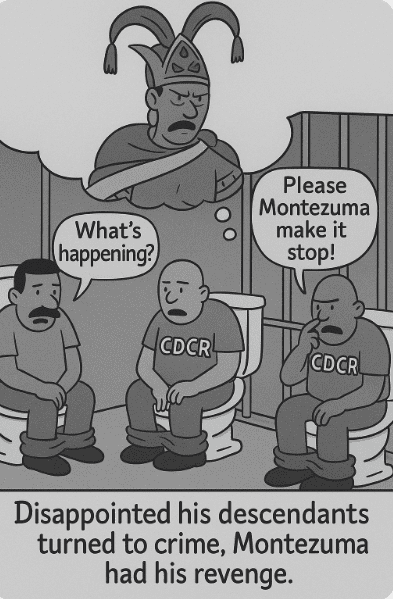
Rules and Discipline
La Eme writes its rules and distributes them to associates. These include waking before 5:30 a.m., never sleeping during daylight (unless your cellmate is an associate and remains awake), respecting members and associates, refusing cooperation with authorities, and maintaining physical fitness.
Physical training is mandatory. Exercises include push ups, running, leg lifts, burpees, “rocking chair” (lying on your back, bending forward, and standing up), and “Aztecs” (crouching and walking forward). Inmates perform exercises in sets of 25 to 50 repetitions, either in their cells or on the prison yard. Failure to exercise results in punishment.
The disciplinary system is progressive. First offense: beating. Second offense: “shun” (social isolation). Third offense: removal from the program, resulting in stabbing or death. If the offender goes into protective custody, gang members may attack the offender’s family instead
I once interviewed an associate who said shunning was worse than beatings. “Once a beating ends, things return to normal. But shunning can last indefinitely,” he explained. His most revealing comment: “You are alone, and you don’t want to be alone in prison.” This statement illuminates why many join gangs in the first place – they desperately seek belonging.

Communication and Operations in La Eme
Each prison has an La Eme “shot caller” who can convene meetings. Attendance is restricted to a strict ‘need to know,’ just like FBI case protocols These meetings typically result in assignment of tasks to associates, who operate under the motto: “You do it or we do you.”
Inmates communicate through coded writing, often called ‘kites’ because they throw the folded paper between cells. Members speak Spanish or the ancient Aztec language Nahuatl, which few can understand. Code words include “green light” or “verde” (authorization to kill), “hard candy,” “name in the hat,” or “on sight” (kill on sight), “red light” (leave alone), and “rata” (rat/informant).
Criminal Enterprise
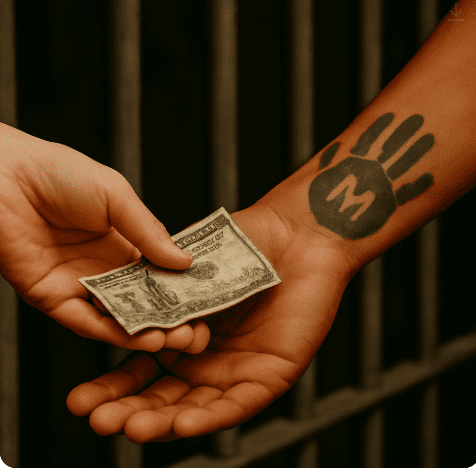
La Eme functions as a criminal business. All Southern California street gangs sell drugs. The drug money must pay “taxes” to associates, who forward the money to prison members. An associate I interviewed estimated that gangs collect 30% of street drug sale proceeds and send the money upstate. Failure to pay results in violence upon incarceration.
Their criminal activities have expanded beyond prison walls to include drug trafficking, alien smuggling, prostitution, assault, kidnapping, and murder. Most violence serves to punish unpaid drug debts. As one associate explained, “La Eme instills fear; otherwise, they won’t get their drug money.”
Drug operations are sophisticated. La Eme members formed alliances with Mexican drug cartels they met in prison. They control prison drug territories through intimidation and violence. Each member claims one-third of narcotics profits from general population yards. “Taxes” are paid in cash or green dot cards, funding drug purchases, debt payments, and commissary items.
Conflict Resolution and Violence in La Eme
Disputes between members or associates are resolved through violence – authorized fights or stabbings. Typical conflicts involve beatings, stabbings, choking, and “spearing” (weapons made from available materials). Other prison-made weapons include blowguns with darts aimed at enemies’ eyes.
Racial tensions remain high. Most prison violence occurs between Hispanic and Black gangs. California prisons experience over 600 lockdowns annually, about 200 based on inmate race. In 2008, the CDCR agreed not to initiate race-based lockdowns following a lawsuit. CDCR employees have noted an unintended consequence: increased inmate injuries.
Solutions to Gang Problems
Unless we address the systemic failures that fuel prison gangs like La Eme, we will continue to witness their growth and influence. La Eme started in 1957, and during those nearly 70 years it has grown. The question isn’t whether we can afford these solutions, but whether we can afford to ignore them.
Prison gangs aren’t merely security threats – they’re symptoms of our correctional system’s fundamental failures. Like I wrote at the beginning of this blog, joining a prison gang is the opposite of rehabilitation, joining a prison gang is telling the prison system you’re unrepairable.
The prison gang problem persists because our correctional system fails to make prison gang membership punishable. I had a college professor who advised that if you want to decrease crime, build all the prisons underground…and then flood them once a year. Obviously we can’t do that, but here is what we could do.
A Possible Solution To Prison Gangs Like La Eme:
All prison gang members would be offered an opportunity to be rehabilitated by renouncing their prison gang membership by signing a a non-membership form, under penalty of perjury.
The non-membership form would be a contract between the prison and prisoner that the prisoner will not participate, help, promote, or assist La Eme. For example, promote the gang would be violated if a prisoner got additional tattoos. Seized cell phones and kites could be used to determine if a prisoner participated or helped the gang.
All gang members who refused to sign or violated the terms of the non-membership form would receive an additional 5 years in prison. Failure to sign the non-membership form or contract violation would authorize the prison to seize money on the prisoner’s books.
Every thirty days the non-signing prisoner would be offered the opportunity to sign the non-membership form. Every time the prisoner refused the first step at rehabilitation by not signing the non-membership form, privileges could be taken away. Some examples of privileges are purchase items through the commissary, visitation rights, exercise, conjugal visits, etc. The whole idea is to make gang membership result in uncomfortable consequences.
Any prisoner who signed the non-membership form would receive free tattoo removal.
What perpetuates Mexican/Americans to continue the gang lifestyle? The answer is no criminal enterprise has done more damage to Mexican/Americans than the prison gang the Mexican Mafia or La Eme. Remember, gang members are their own worst enemy.
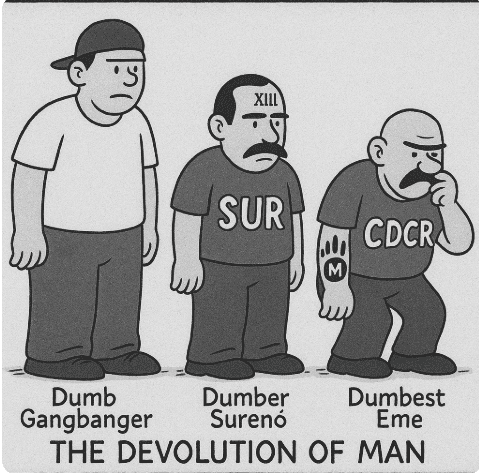
To learn more about La Eme, get the book Less Tagging More Killing: